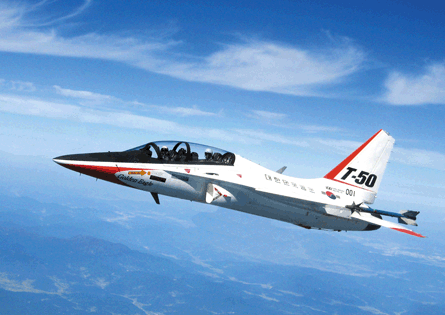South Korean military officials have outlined a strategy to get indigenous military aircraft development programmes to the top of the global aerospace industry within a decade.
The strategy includes a new KF-X stealth fighter based on design and manufacturing experience obtained from a collaboration with Lockheed Martin to develop the T-50 Golden Eagle jet trainer and light attack aircraft.
The KF-X programme will then lead to the development of a stealthy unmanned combat air vehicle.
 |
|---|
| © KAI |
Those programmes should boost South Korea into the top seven countries for aerospace sales by 2020, with an export-driven sector supported by 300 companies and 70,000 workers, said Brig Gen Bo Kuen Cho, director general of aircraft programmes for the nation's Defense Acquisition Program Administration (DAPA).
It is a strategy that is driving requirements for foreign contractors to share "core technologies" in pending aircraft procurements, including for the KF-X III fighter contract, he said.
One barrier to realising South Korea's growth strategy is the need to master highly sensitive technologies, such as stealth aircraft design. However, the country's industry is focused on catching up quickly.
Shaping an airframe to redirect radar waves is no longer a closely-guarded secret, with the key rules available in published textbooks, said Taekyu Reu, of DAPA's Agency for Defence Development. However, properties of modern radar-absorbent materials that are easy to maintain remain secret, Reu added.
Using plasma technology to absorb radar signals is of special interest to the Korean industry, he said. Adding plasma generators to the country's Lockheed KF-16 fighters would significantly reduce the fourth-generation aircraft's radar signature, Reu added.
"We'll do the very best on our part," Reu said, "to secure this technology."
Source: Flight International























